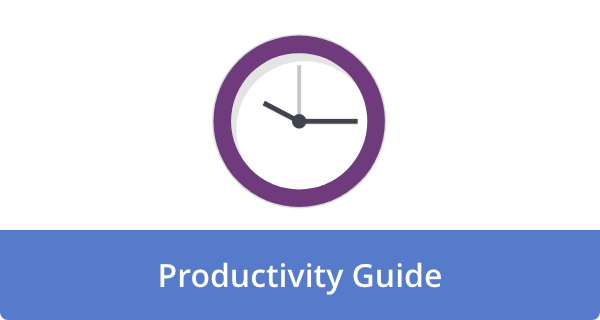

You do not need a perfect Monday. You need a repeatable start that shrugs off weekend inertia, clarifies what matters, and buys back time you usually lose to ping-ponging between meetings and email. If you stack a few small rituals, Monday turns from catch-up day into pace car for the week.
I synthesized these from coaching leaders and builders across product, sales, and ops, then pressure-tested them with operators who prefer results over rituals.
1) Calendar triage before 9:30 a.m.
Open your calendar and defend two deep-work blocks for the week, then skim every meeting and ask one question: what outcome makes this worth it. Trim or convert at least one status meeting to a written update. Now name your three MITs for the week and slot the first one into today’s best energy window. This works because decisions create momentum, not motion. Constraints are real if your day is fully booked. Do the lighter version: protect one 90-minute block and one MIT. Structure beats clutter, which is why a quick outline of the week prevents death by reactive tasks.
2) A 15-minute “one-slide” standup
Whether you lead a team or a project, run a crisp standup anchored by one slide: three bullets for goals, owners, blockers: cap discussion and move tangents to a parking lot. The human part matters here. Seeing priorities together reduces duplicate work and unwinds hidden conflicts sooner. If your culture hates meetings, turn the slide into an async check-in that is due by 9:45 a.m. Either way, the ritual shifts Monday from “what are we doing” to “who owns what and by when,” which cuts the midweek scramble by half for most teams. When your work setting changes, pick a venue that actually supports this quick sync, not the noisiest option in town.
3) The 20-minute inbox checkpoint
Set a timer for 20 minutes and run triage, not archaeology. Apply 3 D’s: decide, delegate, delete. Anything that takes under two minutes gets done. Anything longer becomes a task with a due date. Stop when the timer ends. The value is psychological and operational. You rebuild trust with your future self by capturing commitments, and you starve the attention leak that email creates all day. Prefer a zero-inbox fantasy. Keep a zero-ambiguity reality instead. If you routinely drown in inputs, borrow one alternate path: end-of-day bulk processing on Mondays and Thursdays only. The outcome is the same. Clean edges. Loose ends contained.
4) A “lead metric” scorecard you can fill in under 5 minutes
Pick no more than three lead measures that move your results. Example for a sales manager: 15 outbound touches, 2 discovery calls booked, 1 proposal sent. Record today’s plan by 10 a.m., record actuals at 4:30 p.m. Why it works: you are managing behavior that predicts outcomes, not staring at lagging dashboards that arrive too late to fix. Keep the math simple and visible. If it takes longer than five minutes, you chose the wrong metrics. Treat it like a weekly content audit for your work, where quick, periodic reviews beat giant cleanups. The same logic fuels effective strategy reviews that diagnose and improve before problems set.
5) A five-by-five warm start
Before you touch a task, take five minutes to prime your environment and five to prime your focus. Environment: clear the desk, choose a quiet spot or a cafe with just enough hum, and put your phone out of reach. Focus: write one sentence that defines “done” for the first block, start a 25-minute timer, and hit play on the same low-distraction playlist every time. This small ritual exploits how context cues behavior. If you cannot control the location, control the sound and sightlines. People do better in spaces built for the work at hand, which is why shifting venues and reducing noise can lift productivity in surprisingly big ways.
Worked example: how the five stack on a real Monday
- 8:45 Calendar triage blocks two deep-work windows and slots MIT 1 into 9:30 to 11:00.
- 9:00 One-slide standup confirms owners for a release, uncovers a blocker, and moves it offline.
- 9:20 Inbox checkpoint clears 34 messages, creates 4 tasks, deletes 9.
- 9:30 Five-by-five warm start primes the desk and the mind, then the timer runs.
- 4:30 Scorecard logs 14 touches, 2 first calls, 1 proposal. The gap to plan is visible and fixable tomorrow.
If you repeat that cadence for four Mondays, you will accumulate eight protected blocks, trim at least four meetings, and reduce late-week stress. The compounding effect is the point.
Adoption tips when your Monday is already a meeting buffet
- Do calendar triage on Friday afternoon instead.
- Move the standup to written form with a 9:45 a.m. deadline.
- Keep the inbox checkpoint after lunch if mornings are chaotic.
Keep the rituals light enough to survive the worst week. If you miss one step, do not scrap the rest. Consistency beats intensity. And if you find yourself cruising, take a breath and quickly reflect on what to keep, stop, and tweak. Short, deliberate pauses sharpen the next push.
Why these five work together
They front-load decisions, make ownership visible, cap context switching, and anchor behavior in environment and measurement. That mix mirrors how durable systems work in content and growth teams: small loops of plan, act, review, improve. It is not glamorous. It is dependable. And dependable is what turns Mondays into momentum.
Final thoughts
Monday does not need a reinvention. It needs a starter pistol. Run these five rituals for the next four weeks and log one number each Friday: how many meaningful things shipped. Expect a quieter mind, fewer fire drills, and a calendar that finally serves your goals instead of stealing them. Start next Monday by defending one deep-work block and naming one MIT. Then let the system carry you.
Photo by Tetyana Kovyrina: Pexels











Aaron Heienickle